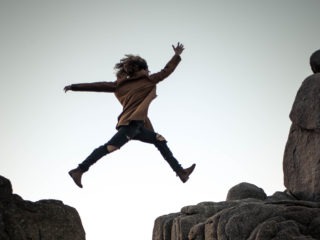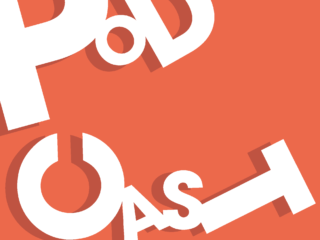Like so many professionals, video producers have had to rethink how they work during the COVID-19 pandemic. In an industry that relies heavily on in-person performance and interaction, everyone involved in a video shoot—talent, creative, the crew, and clients—has had to adapt to new technologies and methods to ensure safety and success on and off the set.
I spoke with Laura Schram, a 25-year production veteran and our commercial and video producer, about how the video production industry is evolving and responding to COVID-19.
Emma: What has changed the most in terms of production since March, when the COVID-19 crisis began escalating in the United States?
Laura: During the shutdown, production was not allowed in Illinois, and no company was traveling employees, so everything in our world just stopped, as far as live-action shoots. Postproduction with existing or Zoom footage continued, but it was pretty limiting creatively. Now that states are opening up and allowing production again, we are back, but with safety precautions in place. I never imagined that being on location with other people could be an occupational hazard. I want the crew members we work with to feel safe and understand that we are taking every safety precaution during a live-action shoot.
Today, I still have the same responsibilities for a production: budgeting, hiring all crew, organizing production schedules, and running the shoot. What has changed dramatically is the way we approach a shoot. Obviously, everyone is hesitant to be around a large number of people. But, by its very nature, production takes a lot of people working together in their specialized roles, plus talent and clients.
I’ve noticed creative teams adjusting their concepts and scripts at the outset to accommodate fewer people or utilizing different kinds of technology during a production. Crew members are also taking on multiple roles to keep the number of people on set down, and we’ve combined makeup and wardrobe into one position. All of this means that a shoot takes more time. But we account for all of these shifts in the shooting schedule, so quality doesn’t suffer.
Emma: How have vendor relations changed through all this?
Laura: Vendors in the production world all are facing the same challenges right now, so everyone I am currently working with understands shrinking budgets and the fear of too many people being on set. I have been extremely pleased with how most vendors are willing to adapt and take on several roles. I am sometimes asking them to work harder and perform multiple jobs for a smaller paycheck. But, that being said, most everyone has expressed nothing but gratitude to be working again, and they’ve been very cooperative. It makes me proud of this community.
Emma: How do you manage client expectations in this environment, with new regulations and reduced crews?
Laura: Clients understand our challenges but, of course, still expect high quality. Most have been very open to shifting creative concepts to be more in-line with what is physically possible to accomplish on a shoot safely. Clients also are agreeable to participating remotely by Zoom or other online platforms, rather than actually attending the shoot.
For the most recent shoot we produced, we ran a feed from our program monitor on set into a computer on a Zoom call with clients while sharing our screen. It gave everyone across the country the opportunity to see what we were shooting in real time and comment directly to the director. It was a win for everyone. We still got the valued client input, live, not after the fact, and the clients were assured we were capturing their message correctly and on-brand and that there would be no surprises in the edit.
Emma: Coming off that recent shoot, with minimal crew, COVID safety regulations in place, and virtual client interactions, are there any best practices that you can share?
Laura: We followed the recommended film production guidelines from the Illinois Film Office to make sure we had a safety protocol on set. Our approach involved three main actions. First, to require personal protective equipment be worn at all times. Talent removed masks only while shooting, and they were purposely positioned apart from each other in all their scenes. They also wore face shields after makeup was applied.
Second, we took extra sanitation measures. A cleaning crew came in and sanitized our set just prior to shooting and directly afterwards. Our makeup and wardrobe artist obtained her certification for Milady for an Infection Control Course. She also purchased UV lights for extra sanitation as well as disposable applicators. I continued to sanitize areas throughout the day and kept everyone at least six feet apart, especially at lunch when we removed our masks.
Third, we ensured everyone was healthy before stepping on set. We also asked everyone to sign a COVID-19 release form stating they had no symptoms and had not been exposed to anyone with symptoms in the past 14 days.
I feel confident that these measures allowed us to have a safe and comfortable shooting environment and will hopefully lead to many more successful shoots in the future. In the current climate, I see this as the new normal. We will someday get back to larger crews and budgets, but I think we will always look at sanitation and safety on set in a different way.




Leave a Reply
You must be logged in to post a comment.